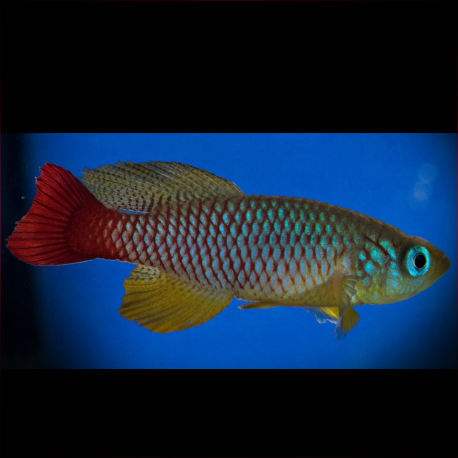More info
Datasheet
| Minimum Tank Size | 40 litres / 10.57 US gallons |
| Maximum Size | 5.5cm / 2.17inches |
| Temperature | 20°C / 68.00°F - 24°C / 75.20°F |
| Hardness | 10.03dgH / 179ppm - 25.04dgH / 447ppm |
| pH | 6.5-7.5 |
General Description:
The Nothobranchius Foerschi, belonging to the family Nothobranchiidae and classified under the order Cyprinodontiformes, is a small-sized fish with a maximum length of 5.5 cm. Wild specimens may exhibit variations in coloration compared to aquarium strains, often appearing more yellowish.
Aquarium Setup:
To house the Nothobranchius Foerschi, a minimum tank size of 40 liters is recommended. The tank setup does not mandate peat, although it can be utilized as a spawning medium. Maintaining water conditions within a pH range of 6.5-7.5, hardness of 179-447ppm, and a temperature between 20-24°C is ideal.
Behaviour:
Inhabiting ephemeral water-filled depressions, pools, and swamps primarily in lowland floodplains, the species experiences fluctuations in water levels with complete desiccation during dry months. Often coexisting with other Nothobranchius species, these habitats tend to be overgrown with terrestrial vegetation.
Feeding and Diet:
As natural micropredators, Nothobranchius Foerschi thrive on small live or frozen foods such as Daphnia, Artemia, and chopped bloodworms. This diet ensures their nutritional needs are met and mimics their natural feeding behavior.
Reproduction & Dimorphism:
During the dry season, adult Nothobranchius Foerschi perish, leaving fertilized eggs within the substrate. These eggs can endure desiccation until the rainy season prompts hatching. Males, showcasing vibrant colors, grow larger than the females in this species.
Habitat and Distribution:
Initially described from Soga in eastern Tanzania, Nothobranchius Foerschi is believed to be restricted to the Ruvu River catchment area. While historical records place them in the Rufiji River watershed, recent evidence suggests their presence is limited to the Ruvu River and its delta. These fish prefer habitats prone to seasonal water level changes and are often found alongside other Nothobranchius species.

